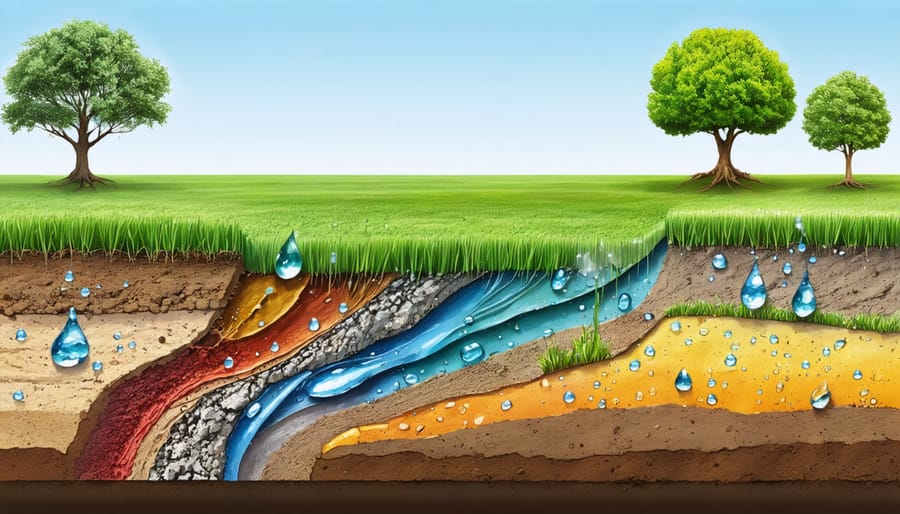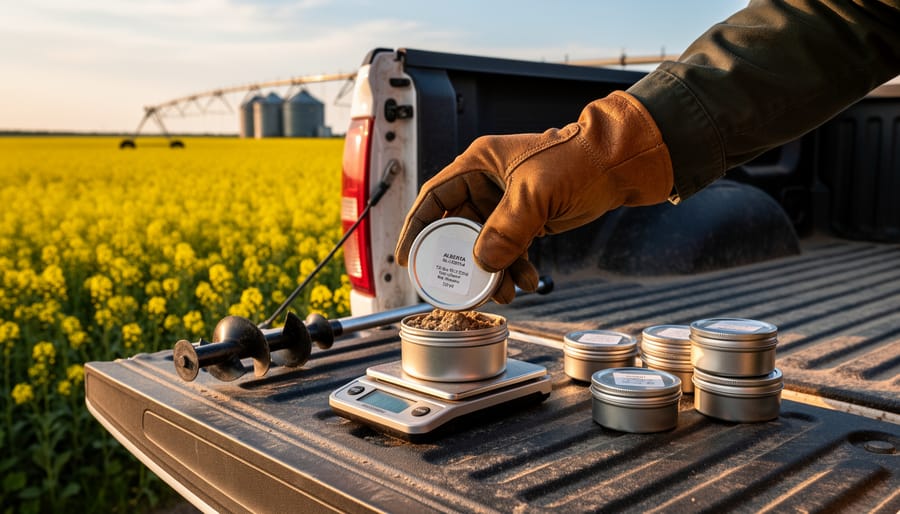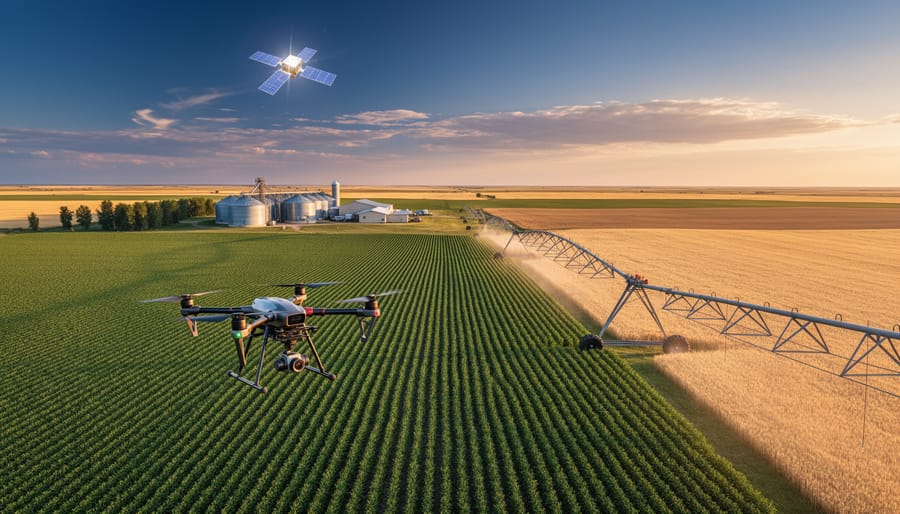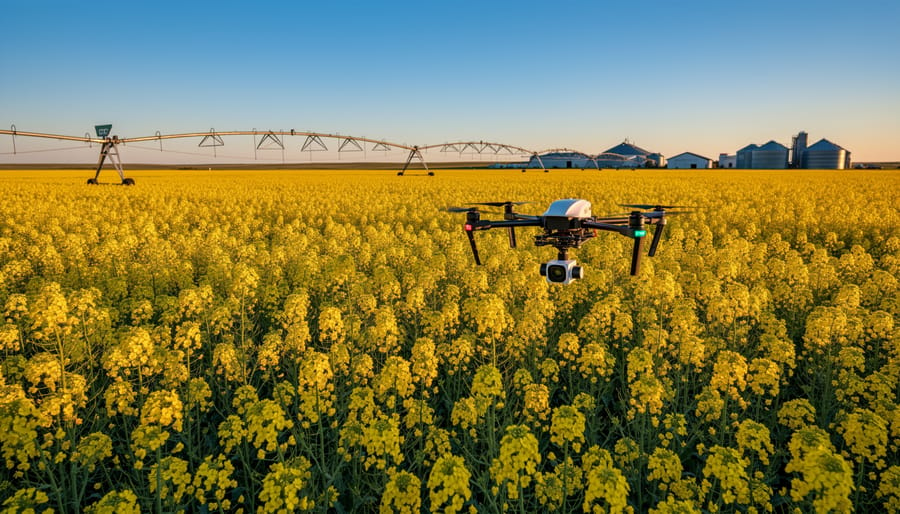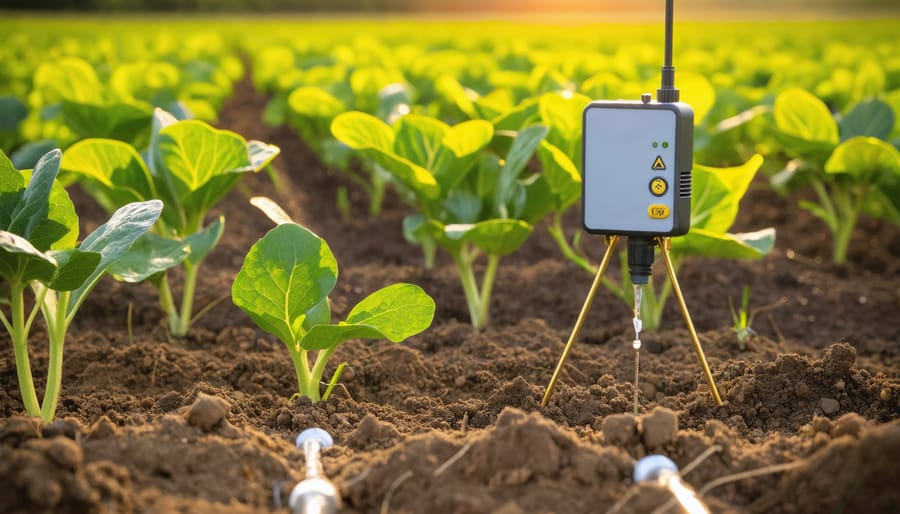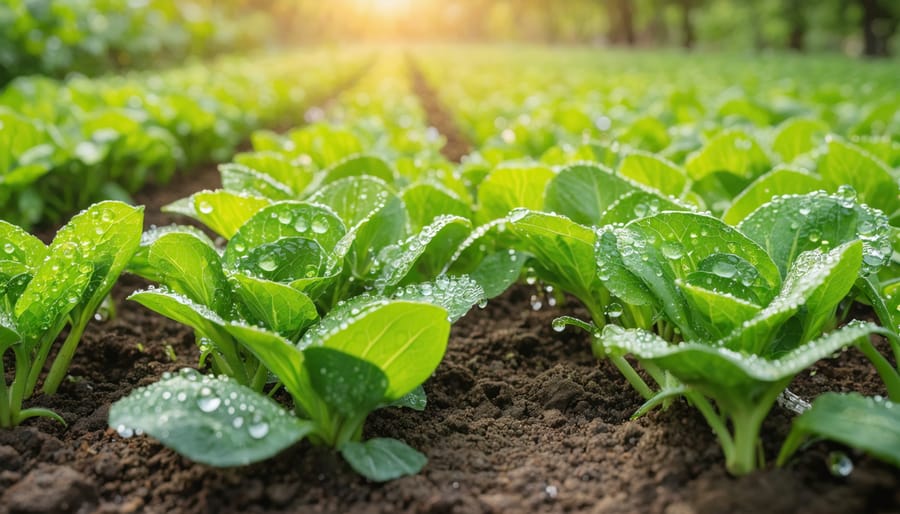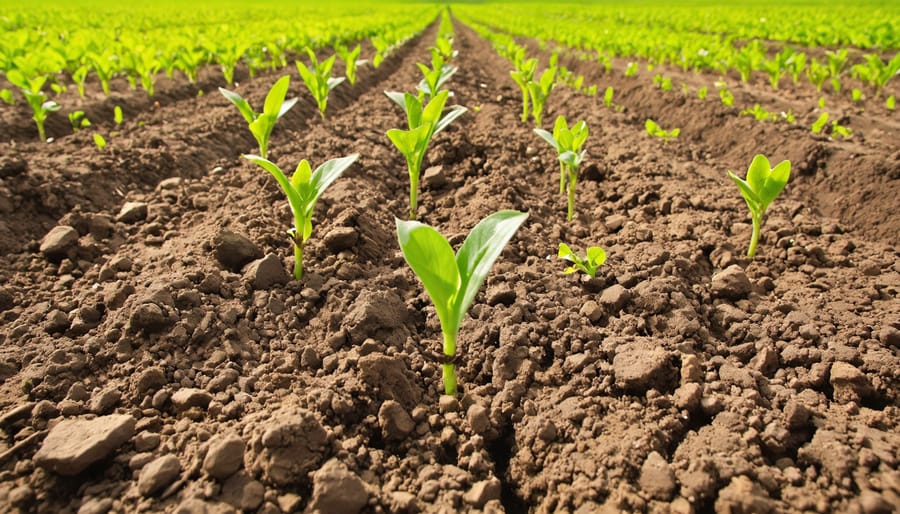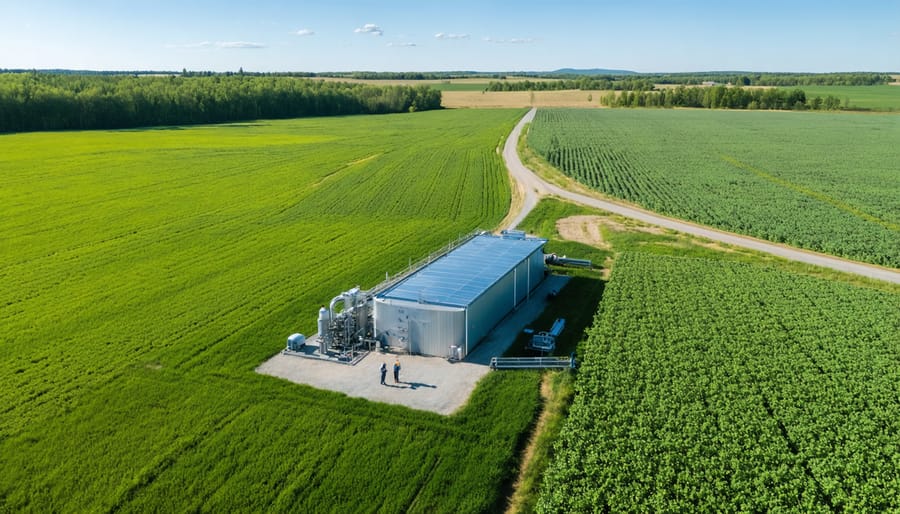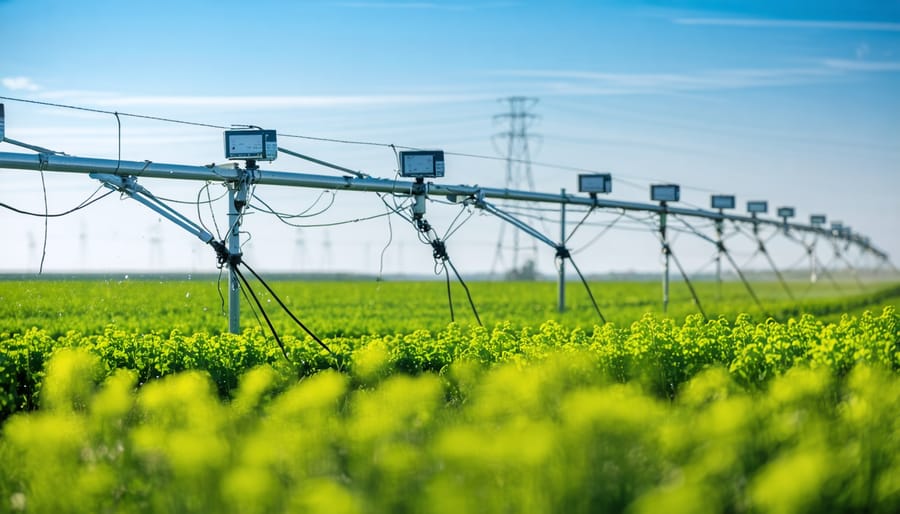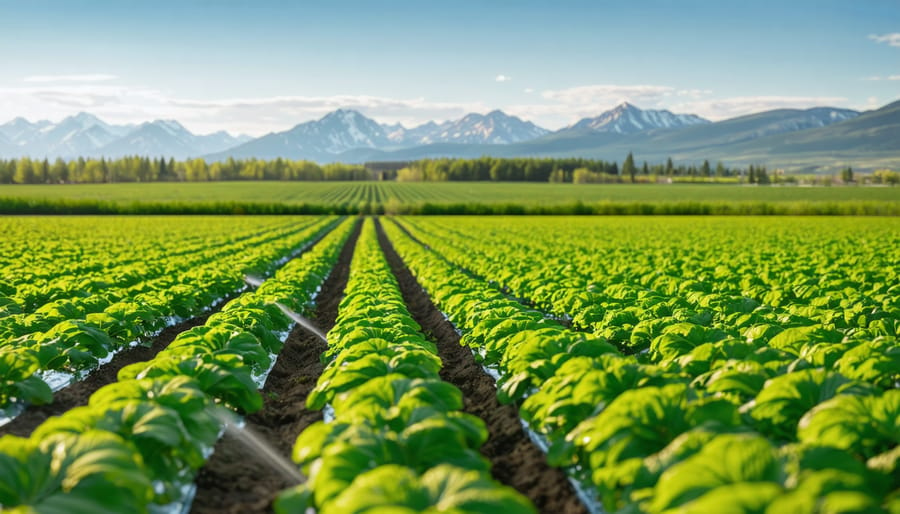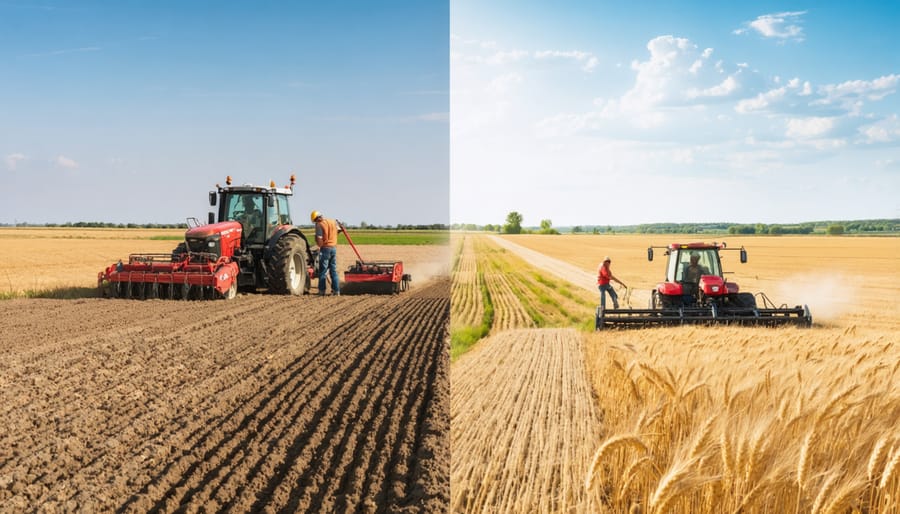Witness the remarkable journey of water infiltration across Alberta’s diverse agricultural landscape, where every drop shapes our farming future. From the rich black soils of the Peace Region to the prairie grasslands, infiltration drives our groundwater systems, sustains crop production, and maintains essential soil moisture levels throughout the growing season. Recent field studies across Canadian farms show that healthy soil structure can absorb up to 40% more water than degraded fields, directly impacting crop yields and farm sustainability. Understanding these infiltration patterns becomes increasingly crucial as Prairie farmers adapt to changing precipitation patterns and seek to maximize every millimetre of available moisture. Whether managing spring melt in the foothills or summer storms in central Alberta, the way water moves through our soil determines the success of our agricultural operations and the health of our watersheds.
Natural Infiltration Systems on Canadian Farms
Prairie Soil Profiles
Alberta’s prairie soils are nature’s perfect water filtration system, featuring distinct layers that have developed over thousands of years. The region’s characteristic Chernozemic soils, rich in organic matter, create an ideal environment for water infiltration. These soils typically consist of a deep A-horizon (topsoil) that can extend 30-40 centimetres, allowing for excellent water penetration and storage.
The soil structure includes well-developed channels and pores created by plant roots and soil organisms, facilitating natural water movement. This network acts like a sophisticated filtering system, removing impurities as water moves downward. The presence of clay minerals in the B-horizon further enhances the soil’s ability to retain moisture while allowing excess water to continue its journey to the groundwater table.
Local farmers have observed that these prairie soils can absorb up to 25 millimetres of rainfall per hour under optimal conditions. This remarkable capacity helps prevent surface runoff and erosion while ensuring crops have access to stored moisture during dry periods. The natural calcium carbonate deposits found in deeper layers also contribute to maintaining soil structure and promoting healthy water movement throughout the profile.
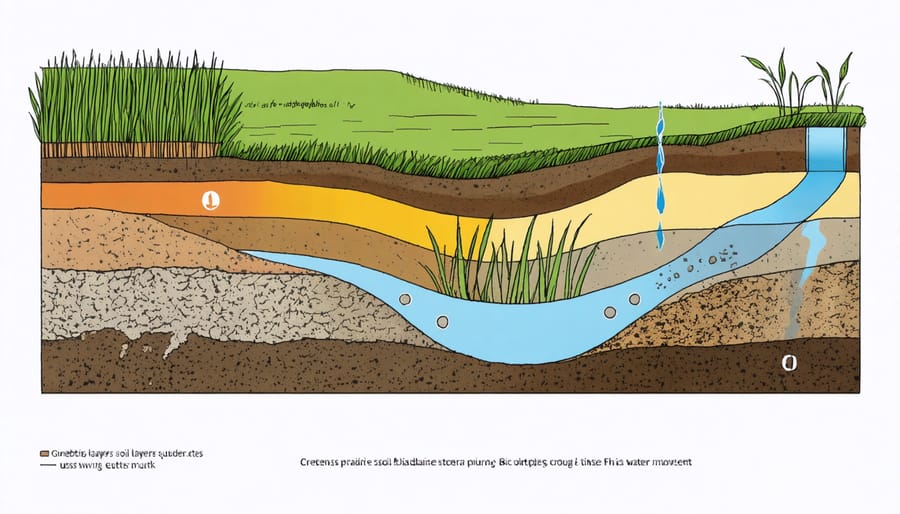
Seasonal Impact on Water Movement
Alberta’s distinct seasons dramatically influence water infiltration patterns throughout the year. During spring, the combination of melting snow and rain creates optimal conditions for infiltration, particularly in April and May. However, if the ground remains frozen, much of this moisture runs off instead of penetrating the soil.
Summer brings variable infiltration rates, with intense thunderstorms sometimes overwhelming the soil’s absorption capacity. Many Alberta farmers have observed that gentle, sustained rains in June and July typically result in better soil penetration than brief, heavy downpours.
Fall presents a crucial window for water infiltration before winter, with September and October rains helping to build soil moisture reserves. This stored water becomes invaluable for early spring crops. Local farmer Mike Thompson from Lacombe notes, “We’ve learned to appreciate those autumn rains – they’re like money in the bank for next season’s start.”
Winter sees minimal infiltration as frozen ground creates a natural barrier. However, snow accumulation acts as a reservoir, storing moisture that becomes available during spring thaw, completing the seasonal cycle of water movement in our soils.
Agricultural Practices That Enhance Water Infiltration
Cover Cropping Benefits
Cover crops are proving to be game-changers for Canadian farmers looking to enhance water infiltration while practicing regenerative agricultural practices. These specialized crops, planted during off-seasons, create a living shield that protects and improves soil structure year-round.
In Alberta’s varied climate, cover crops like clover, rye, and vetch develop extensive root systems that create natural channels for water movement. These channels act like tiny highways, allowing water to penetrate deeper into the soil profile instead of running off the surface. Local farmers report up to 40% improved water infiltration rates in fields where cover crops have been established for two or more seasons.
The benefits extend beyond water management. Cover crops add organic matter to the soil, which acts like a sponge, holding moisture for longer periods. This improved soil structure helps fields withstand both heavy spring rains and summer dry spells. Prairie farmers using cover crops consistently observe better drought resistance and reduced water pooling after storms.
Moreover, the enhanced soil biology promoted by cover cropping creates stable soil aggregates. These small clusters of soil particles maintain their structure even during intense rainfall, preventing surface crusting and maintaining open pathways for water infiltration. This natural soil improvement strategy has helped many Alberta farmers reduce irrigation needs while improving crop resilience.
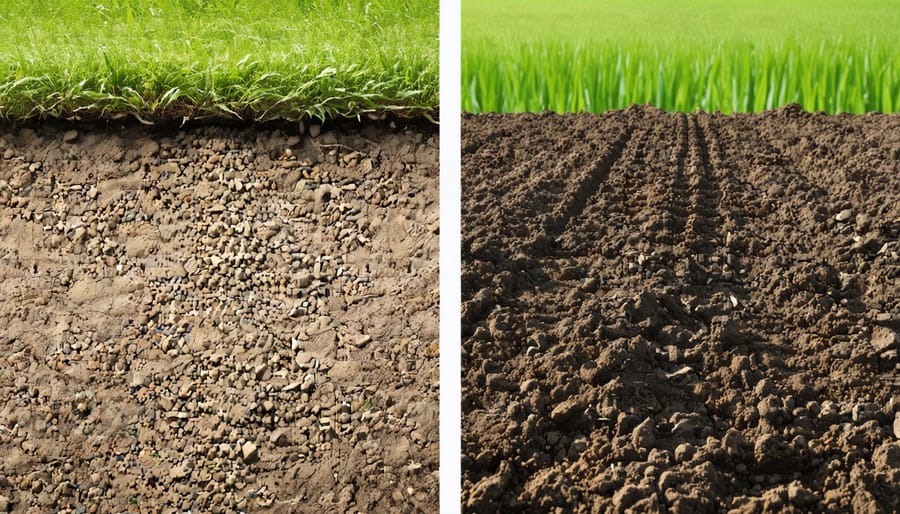
No-Till Farming Impact
When farmers adopt no-till practices, they’re making a significant investment in soil health management that directly impacts water infiltration rates. Here in Alberta, studies have shown that fields managed without tillage for five or more years can absorb water up to 3.5 times faster than conventionally tilled fields.
The benefits are particularly noticeable during our intense summer storms and spring melts. Without tillage, crop residue remains on the soil surface, creating natural pathways for water to enter the soil profile. These pathways, combined with an undisturbed network of earthworm channels and root systems, allow water to penetrate deeper into the ground rather than running off.
Local farmer Jim Thompson from Lethbridge County reports that since switching to no-till practices ten years ago, his fields retain moisture significantly better. “After a 25mm rainfall, I can dig down 30cm and find consistent moisture throughout the soil profile, instead of just surface wetness,” he notes.
The improved infiltration rates also mean less soil erosion, reduced flooding risk, and better drought resilience. During dry spells, no-till fields typically maintain crop productivity longer than conventional fields, as the preserved soil structure helps retain available moisture where plant roots can access it.
Real-World Examples from Alberta Farms
Southern Alberta Success Story
The Wilson family farm, located just outside of Lethbridge, has become a shining example of successful water infiltration management in Southern Alberta’s semi-arid climate. Over the past decade, Sarah and Tom Wilson have transformed their 800-hectare operation through innovative soil management practices that maximize natural water absorption.
By implementing a diverse crop rotation system including wheat, canola, and cover crops, the Wilsons have increased their soil organic matter by 2% since 2015. They’ve also adopted no-till practices and maintain crop residue on their fields year-round, which has significantly improved their soil’s infiltration capacity.
“During the 2021 drought, we noticed our fields retained moisture much better than neighboring properties,” shares Sarah Wilson. “Our infiltration rate has improved from 15mm per hour to over 40mm per hour in just five years.”
The farm now serves as a demonstration site for local agricultural extension services, hosting regular field days where other farmers can learn about their practices. The Wilsons’ success has inspired fifteen other local farms to adopt similar methods, creating a growing community of conservation-minded farmers in Southern Alberta.
Their efforts have resulted in a 30% reduction in irrigation needs while maintaining consistent yields, proving that good infiltration management benefits both the environment and the bottom line.
Central Alberta Innovation
In Central Alberta, farmers and agricultural organizations have pioneered innovative techniques to enhance water infiltration in their fields. The Lacombe Research Centre, working alongside local producers, has developed a system combining cover crops and precision soil monitoring to optimize infiltration rates. This approach has shown promising results, with participating farms reporting up to 30% improvement in soil moisture retention.
Local farmer Sarah McKenzie implemented a modified strip-till system on her 400-hectare farm near Red Deer, incorporating winter rye as a cover crop. “We’ve seen dramatic improvements in our soil structure,” McKenzie shares. “During spring melt, water now penetrates deeper instead of running off, giving us a better start to the growing season.”
The Central Alberta Soil Health Initiative, a collaborative project between farmers and researchers, has introduced strategic placement of organic matter and biochar in test plots across the region. Early results indicate a 25% increase in infiltration rates compared to conventional methods. These techniques are particularly valuable during Alberta’s characteristically dry periods, helping farmers maintain soil moisture through extended dry spells while reducing erosion during heavy rainfall events.
The success of these initiatives has inspired neighboring regions to adopt similar practices, creating a ripple effect of sustainable water management across the prairies.
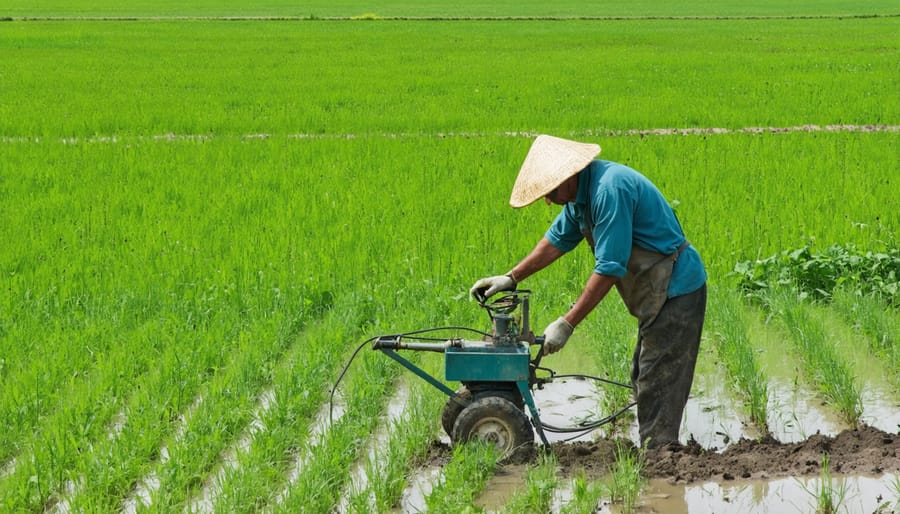
Measuring and Monitoring Infiltration
Measuring infiltration on your farm doesn’t have to be complicated. The simplest method is the ring infiltration test, which involves pushing a metal ring about 15 centimetres into the soil and filling it with water. By timing how long it takes for the water to soak in completely, you can get a good sense of your soil’s infiltration rate.
For a more detailed assessment, many Alberta farmers use the double-ring infiltrometer method. This involves using two concentric rings and provides more accurate results by controlling for lateral water movement. You’ll want to conduct these tests at different locations across your fields, especially in areas where you notice varying crop performance.
A practical tip from experienced Prairie farmers is to observe your fields after rainfall or irrigation. Look for puddles that persist for more than an hour – these indicate poor infiltration areas that need attention. Soil probe measurements before and after watering can also help you track moisture movement through your soil profile.
Keep a logbook of your measurements and note seasonal changes. Many successful farmers in our region test infiltration rates in spring and fall, allowing them to adjust their soil management practices accordingly. Local agricultural extension offices can provide detailed guides and sometimes even lend out infiltration testing equipment to help you get started.
Remember, consistent monitoring helps you make informed decisions about tillage practices, cover crop selection, and irrigation scheduling.
Understanding and managing water infiltration is crucial for successful farming in Alberta and across Canada. By implementing proper soil management practices, you can significantly improve water infiltration on your land. Consider starting with regular soil testing to monitor organic matter content and structure. Adding cover crops to your rotation can enhance soil health and water retention, while minimized tillage helps maintain valuable soil structure.
Remember that every farm is unique, and what works for your neighbour might need adjusting for your soil conditions. Connect with your local agricultural extension office for personalized guidance and potential funding opportunities for soil improvement projects. By taking these steps today, you’re not just improving water infiltration – you’re investing in the long-term sustainability of your farm and our Canadian agricultural community.
Join the growing network of farmers who are sharing their success stories and learning from each other. Together, we can build more resilient farming operations that make the most of every drop of water.

